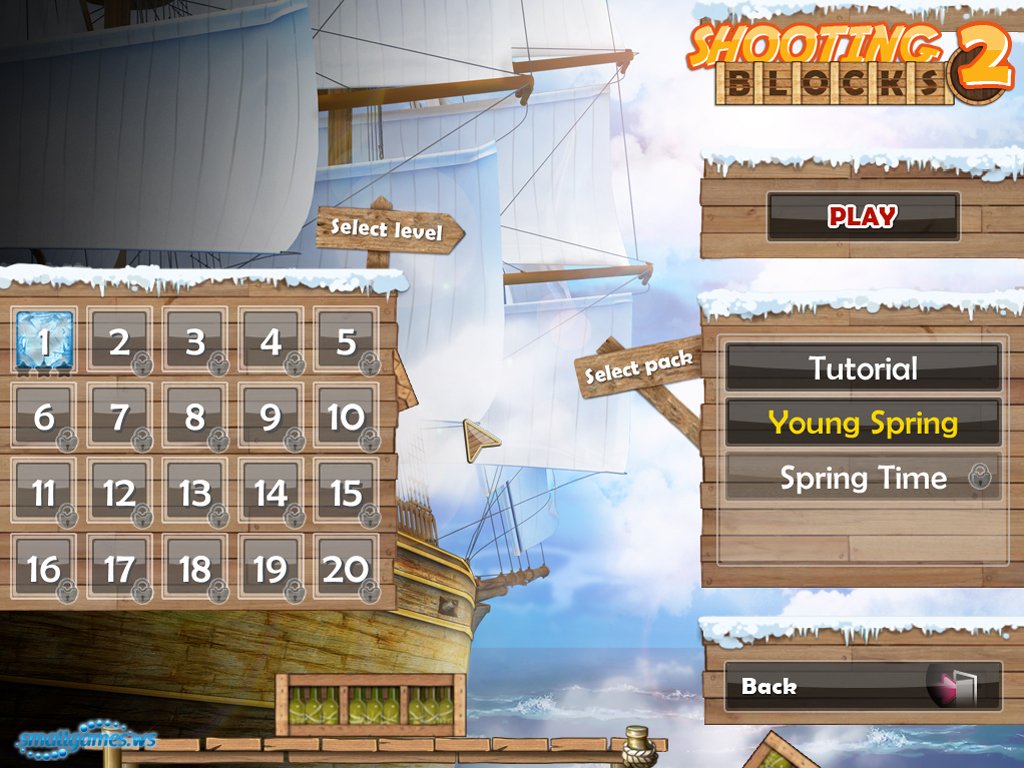
This can be done repeatedly to advance global.msc to any particular value, as long as there are enough choicers available.Ĭhoicer overflow refers to a glitch that uses multiple choicers simultaneously to advance text far beyond where it is meant to advance. If another choicer is then activated, the value global.msc is incremented a second time and the corresponding set of text is displayed.
#SHOOTING BLOCKS PUZZLE UNDERTALE CODE#
Then if the set of text includes a choicer, global.msc is incremented by 1, which normally contains the post-choicer text, if any, as well as potentially other code that accompanies the selected choice. When a textbox is created, the object creating the textbox assigns a value to global.msc, which is then used to look up which set of text to display. These choicers use a variable called global.msc. Choicers are types of textboxes that give the player a choice between two different options.
#SHOOTING BLOCKS PUZZLE UNDERTALE FULL#
There also exists a variant of PCE known as PCE slide where the player uses the frame of full control acquired by the punch card to walk onto the trigger of the cutscene which, like a regular PCE, also starts the cutscene and allows you to skip it.Ĭhoicer overflow in the context of Undertale speedrunning refers to a glitch that involves using multiple choicers at once to advance text beyond its normal limits. Due to this, the Punch Card’s ability to set global.interact to 0 and unlock movement can be used to skip the entire cutscene. Most cutscenes only lock movement in the very beginning of the cutscene, which is most likely the frame the cutscene starts. During this frame, the cutscene trigger is activated, beginning the cutscene.

There happens to be a one-frame window between using the Punch Card and when it is displayed which grants you full movement control. This will give your character a global.interact value of 0 which in turn will allow you to move during the cutscene. PCE refers to a glitch where the player menu buffers onto a trigger without triggering the cutscene, uses the Punch Card from the item menu, and then proceeds to close the Punch Card. Fortunately, the blcon’s alarm value can be manipulated using RNG manipulation. Typically, you want this value to be as close to 15 as possible, and anything above 15 wastes 1 to 5 frames over perfect. The blcon’s alarm value ranges from 15 to 20, and the value of the alarm determines the number of frames the game shows the exclamation mark (!) icon (or smiley face icon if you are on the Genocide route) for. The timesave from menu buffering an encounter can be made even greater if the blcon (BLCON in lowercase) alarm value is the maximum possible value of 20. By the time the encounter is over you would be already in the next room or, depending on the room, potentially the room after that. This saves time as you don’t have to wait for the battle to start and then wait for the battle to end. Doing so skips the encounter that you would normally get if you don’t menu buffer into the room trigger.

It is also used to hit triggers for rooms while you are at the maximum step count for an encounter to occur. Doing the inputs shown in Frame 1 and advancing a frame will allow you to chain these to pull off time-saving manoeuvres to get tricks such as Dogi/Dog Marriage Skip.

This will open the menu, move the player in the direction of your choosing, and close the menu.


 0 kommentar(er)
0 kommentar(er)
